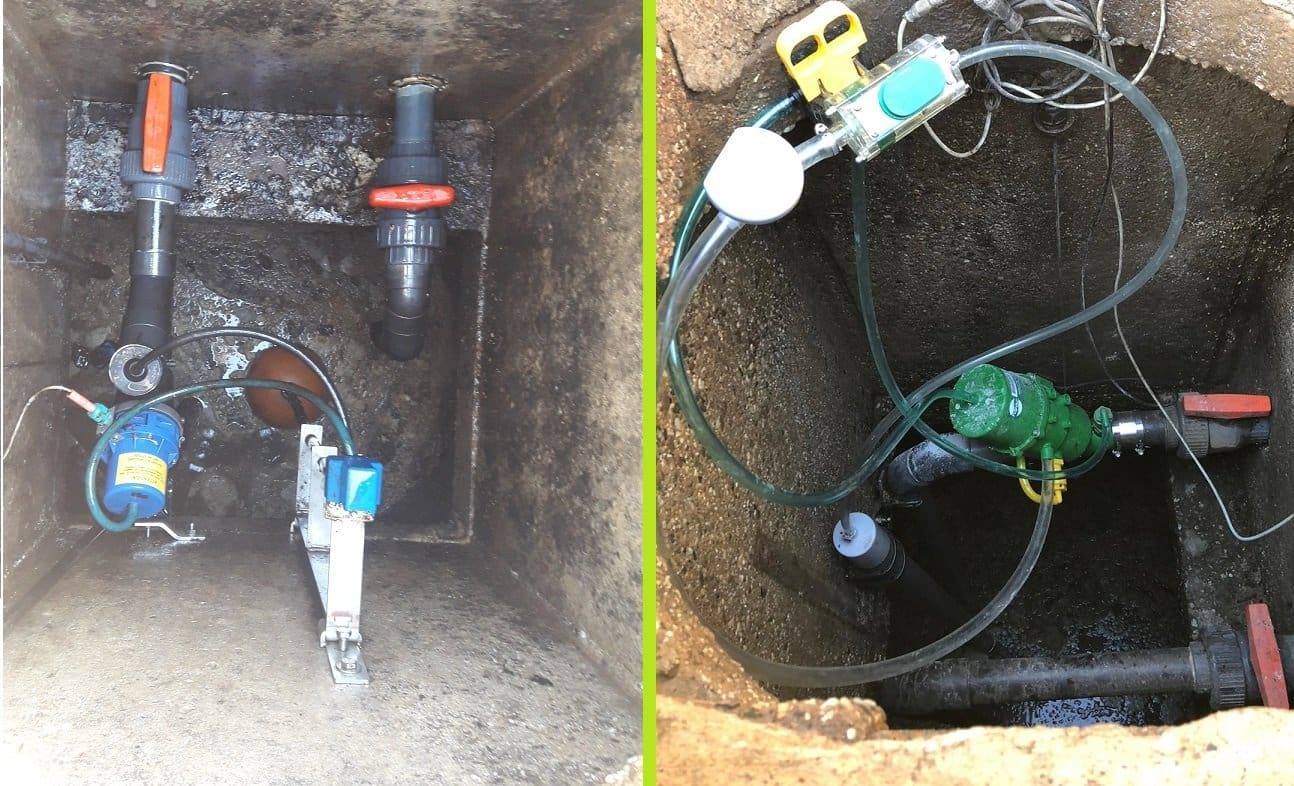Rehabilitating Old 2-inch Vacuum Systems
Those engineers thinking that vacuum sewer technology is new, may be surprised to learn that there are still a number of operating systems installed in the late 1960’s and 1970’s.
These early systems were installed using 2-inch vacuum valves rather than the 3-inch (80mm) vacuum valves commonly used today. The modern inventor of vacuum systems Joel Liljendahl wanted to separate grey (shower/laundry) water and black(toilet) water using vacuum. A 2-inch valve was sufficient for this use and Electrolux who bought the patent started using the 2-inch valve in a number of projects through The Netherlands, Germany, the Caribbean, Australia and the USA.
As a testament to the technology, many of these original projects are still operating, though not as well as modern systems. The same would be said for any technology (cars, computers, televisions).
Sylvania Waters Australia
 In 1968 one of the world’s largest 2-inch vacuum systems was installed at Sylvania Waters, 12 km south of Sydney Australia. The vacuum valves in fiberglass pits collected wastewater from 2 houses sending it to the vacuum pump station. The early system used a ball float controller, similar to what was used in old toilet cisterns. As this was not a separated grey/black water system, a 2-inch valve was clearly going to be a choke point with a 3-inch toilet drainpipe. In 1994 we were hired by Sydney Water to fix up the system, replace the valves and float controllers. Sadly because of the collection pit size and the vacuum main size it was not possible to increase the valves to 3 inch, but the system was improved.
In 1968 one of the world’s largest 2-inch vacuum systems was installed at Sylvania Waters, 12 km south of Sydney Australia. The vacuum valves in fiberglass pits collected wastewater from 2 houses sending it to the vacuum pump station. The early system used a ball float controller, similar to what was used in old toilet cisterns. As this was not a separated grey/black water system, a 2-inch valve was clearly going to be a choke point with a 3-inch toilet drainpipe. In 1994 we were hired by Sydney Water to fix up the system, replace the valves and float controllers. Sadly because of the collection pit size and the vacuum main size it was not possible to increase the valves to 3 inch, but the system was improved.
Now, with it being over 50 years old, some really positive changes can be made, specifically with the help of monitoring systems.
Even though most vacuum regulations call for a minimum sized valve of 3-inches there have still been some 2-inch and 2 1/2-inch valve systems installed. You have all met that client who wants to save $100 on a valve but doesn’t care that the utility will have to spend a fortune on maintenance trying to clear blockages. This has not helped the reputation of vacuum systems, and we often hear of problem systems and high maintenance costs. Quite often it is due to small or bad quality valves or old-fashioned ball controllers still being used.
Central Coast, New South Wales, Australia
Flovac recently upgraded three old 2-inch valve systems at Tacoma and St Huberts. Replacing nearly 1,000; 2-inch valves for new Flovac 2-inch valves. We also installed a new wireless monitoring system and remote mounted all controllers. The client has seen an immediate turn around in operational costs and callouts. At St Huberts the old valves were also using ball float controllers which are similar to old toilet systems and have no place in modern sewerage networks. Infiltration has been identified at multiple locations and resolved.


Reusel, The Netherlands
One recent system replacement we made was in the village of Reusel in The Netherlands. The system was not that old, but the 2-inch valves had a lot of blockages, ball float controllers were used and there was no integrated monitoring system. Our team in the Netherlands has managed to upgrade the system and reduce operational costs considerably.
If you have an old 2-inch system. Contact us at [email protected] and we can give you more details about what can be done to help.



Pump Station Information captured for the operators and managers






